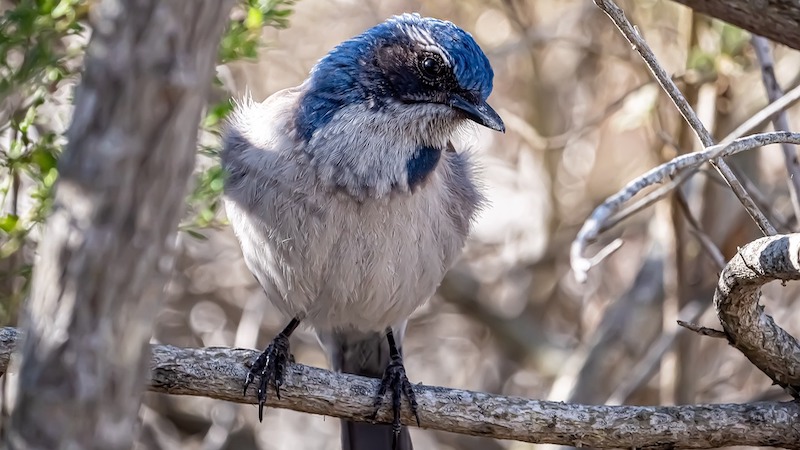Warmer winters in Florida are driving significant changes in the breeding behavior of the federally threatened Florida scrub-jay, with troubling consequences. According to a new study published in Ornithological Advances, these birds are now nesting a week earlier than they did in 1981, yet their reproductive success has dropped by 25% over the same period.
The culprit? Rising temperatures have extended the spring activity of snakes, the primary predators of jay nests.
“There is significantly more snake activity in warmer weather,” said Sahas Barve, lead author of the study and director of avian ecology at Archbold Biological Station. Over 37 years, researchers from Archbold and the Cornell Lab of Ornithology analyzed data and observed a 2.5°F increase in average winter temperatures at the station.
Florida scrub-jays respond to nest losses by attempting to rebuild multiple times within a season, an effort that drains their energy reserves and impacts their long-term survival.
“Despite the increased number of breeding attempts, the birds aren’t producing more offspring,” said John Fitzpatrick, co-author and director emeritus of the Cornell Lab of Ornithology. He warned of a trade-off: “The more breeding effort expended each year, the less likely the bird is to survive in the long run.”
The decline in both reproductive success and longevity is alarming for a species already under threat. Even in well-protected habitats like Archbold Biological Station, climate change undermines decades of conservation efforts.
“Habitat management can only do so much,” Barve explained. “What seems like a stable population today may not remain so in the next 10 to 20 years.”
This research, supported by Archbold Biological Station, the Cornell Lab of Ornithology, and the National Science Foundation, highlights the critical role of climate in the survival of threatened species and the increasing challenges of conservation in a warming world.
